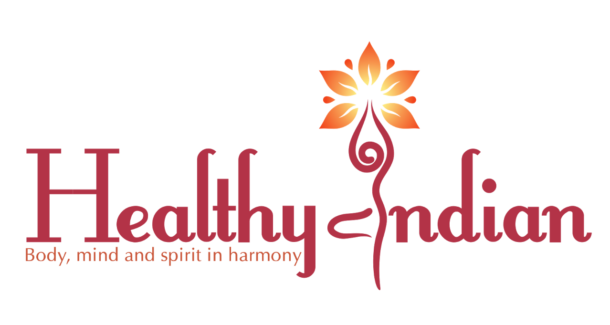Despite all of the awareness around heart disease prevention, it’s troubling that women are still viewed differently than men, even though heart disease remains the number one killer in women. Women generally still perceive breast cancer as a greater threat to their health despite the following fact:
Heart disease kills more women than all cancers (including breast) combined.
My goal in this post is for readers to close the gender disparity and focus on making heart disease as much of a priority in women than in men.
Case Study
I want to discuss a case of a young woman with heart disease to illustrate how easily this can be missed. This is a real case, but I’ve changed the name and some of the background details for privacy reasons.
Ana is a 46-year-old woman who came to see me in the clinic after having her first heart attack at age 43, despite having no obvious risk factors. I looked back at her records which revealed a normal cholesterol, blood sugar and blood pressure.
She did have a history of PCOS (Polycystic Ovarian Syndrome) and gestational diabetes (diabetes during pregnancy), hypothyroidism, eczema, and intermittent joint aches and pains for which no cause was found. The only abnormal lab marker she had was an elevated hsCRP, which is a test for inflammation.
Ana noticed progressive fatigue over a period of 3 days which was very unusual compared to her baseline energy levels. She had no chest pain at all and even attended her regular evening exercise class where she was barely able to keep up.
She decided to see her doctor the next morning who thankfully ordered an EKG which showed abnormalities suggestive of a blockage in an artery. Ana was immediately taken to the emergency room where she was diagnosed with a massive heart attack.
We’ll discuss traditional and less typical risk factors to help you understand where Ana’s heart disease came from, and what women can do to be more proactive earlier in life to prevent something similar from happening.
Symptom Differences in Women
As mentioned in the case study, Ana didn’t have the typical chest pain you would expect. It’s more common for women than men to not have chest pain and instead have some of the following less typical symptoms:
- Neck, jaw, shoulder, upper back or abdominal pain/discomfort
- Shortness of breath
- Fatigue
- Pain in one or both arms
- Nausea and or vomiting
- Sweating
- Light-headedness or dizziness
Women’s symptoms may occur more often while they are at rest or asleep. Mental/emotional stress may also be a more common triggering event than in men.
Since women can have these more subtle, atypical symptoms, they typically come to the ER much later and as a result can have more massive damage to their heart muscle.
In Ana’s case, she may have had less damage to her heart muscle if she got evaluated at the first signs of her unusual fatigue.
Traditional Risk Factors
The major risk factors for heart disease are similar in men and women. Risk factors you can’t change include age, ethnicity (high risk groups include Asian Indians, Filipinos and African Americans), and family history, while risk factors that can be modified, include cholesterol, blood pressure, blood sugar (prediabetes, diabetes), tobacco use, inactivity, excess body weight and emotional stress.
The impact of these risk factors on women can vary as follows:
- Diabetes is a greater risk for heart disease in women: While men with diabetes have 1.7 times the risk of heart disease than men without diabetes, diabetic women have 3 times the risk of heart disease compared to non-diabetic women.
- Metabolic syndrome (let’s call it MetS) is a major risk for women: This is a condition closely related to diabetes and characterized by features such as high triglycerides, low HDL (good cholesterol), high blood pressure, increased belly fat, and elevated blood glucose. MetS like diabetes, appears to be a greater risk for heart disease in women than in men and also accounts for heart disease at an earlier age in women.
- Cholesterol: Before menopause it appears, estrogen helps to counterbalance high risk cholesterol by raising the healthy HDL levels, but this protective effect diminishes after menopause. This may be one of the reasons why heart disease risk increases for women and approaches that of men after menopause.
- Belly Fat: I’ve discussed in detail in this post how belly fat (aka “visceral fat”) is a risk factor for heart disease and this Harvard review shows that belly fat poses a greater threat to heart health in women than men. I also have noticed in my clinic that excess body fat in women often is a primary cause of very high levels of the inflammatory marker, hsCRP.
In my clinic over the years I am clearly seeing women of all ages struggling more with excess body fat, blood glucose and metabolic syndrome which is raising their overall risk of heart disease significantly.
Although women typically have a lower risk of heart disease than men before menopause, the risk becomes more equivalent to men if women have diabetes or metabolic syndrome, which we discussed is happening increasingly in younger women.
Menopause and Estrogen
Menopause is not a direct risk factor for heart disease, but the protective effects of estrogen on the blood vessel inner wall and on cholesterol (as mentioned above) do decline after menopause as estrogen levels decrease.
I view menopause as an “unmasking” of heart disease risks earlier in life.
You may have gotten away with acceptable cholesterol levels and blood pressure in the midst of your unhealthy diet and inactive lifestyle in your 20s, 30s and possibly 40s, but as you approach menopause, these habits may now manifest with significant heart disease risk.
Since I mentioned that your body’s natural estrogen can protect against heart disease, does that mean taking estrogen in the form of hormone replacement therapy (HRT), reduces heart disease risk? That’s what we used to think, but now the evidence is more confusing with conflicting studies suggesting both benefits and risks.
Recommendations should be personalized and discussed with your doctor. I do think that more recently HRT has been needlessly villainized, and it can clearly improve quality of life and possibly promote longevity when used in the right circumstances. Read this Mayo Clinic review for a more balanced perspective.
Less Typical Risks to Be Aware Of
In Ana’s case, she didn’t really have the traditional risk factors, but she did have two specific conditions earlier in life that indicated her body’s tendency towards insulin resistance, a major root cause for heart disease and diabetes. The first is PCOS, which is a rising epidemic in young girls and women which I wrote in detail about here. If you’ve never heard of PCOS, you must read this post!
So many young girls and women, especially of South Asian background, have this condition, and it can raise future heart disease risk by 2-7 times.
The other risk condition was her gestational diabetes (diabetes during pregnancy). Even though her blood glucose was normal after pregnancy, this condition still indicates a higher future risk of heart disease for both mother and baby.
This means if you had diabetes during pregnancy, you need to take better care of your health and your child’s, and if your mother had gestational diabetes, you need to be aware that your future risk of heart disease (and diabetes) is also higher.
Ana’s case highlights some other often overlooked risks. She had multiple conditions that indicated increased inflammation in her body, which is a process where the immune system becomes overactive on a chronic basis. Inflammation is a root cause for heart disease and most other chronic health conditions like cancer and Alzheimer’s disease.
Her inflammatory conditions included her hypothyroidism which is most commonly due to immune system attack on the thyroid gland, a condition called Hashimoto’s thyroiditis which I blogged about here, where I discuss how to prevent and possibly reverse hypothyroidism.
She also had eczema, an inflammatory skin condition, joint pains indicating musculoskeletal inflammation, and she even had an elevated lab marker for inflammation, the hsCRP.
Now these conditions may not be considered “serious” or be viewed as typical risk factors for heart disease, but I still treat them as early warning signs that the inflammation flame is flickering and may manifest in a more serious form (heart disease, cancer, Alzheimer’s disease, etc.) later in life.
Prevention for Women
Now that you understand typical and atypical risks for heart disease, it is really important to be as proactive as possible in reducing your risk of future heart disease. Read our prior posts on nutrition, stress, exercise, and sleep.
Many women don’t have a primary care doctor and only see an OB/GYN for their medical care which includes their regular pap smears and mammograms. Although these tests are important, don’t forget that heart disease kills more women than all cancers combined.
Unless your OB/GYN is also doing cardiovascular prevention with regular screens for cholesterol, blood pressure and blood glucose, it is important you have a doctor that is focusing on your heart health.
You may also opt for a primary care doctor who handles both your cardiovascular screenings and female cancer screenings as well. Bottom line is for you and your doctor(s) to be as proactive as possible with heart disease prevention, especially if you already have risks.
I know women and especially multitasking mothers may have very little time to prioritize their health, but just close your eyes and think for one moment what the impact would be on your family if a tragic and preventable event like a heart attack occurred.
As men, we need our wives, mothers, grandmothers, sisters and daughters to live long healthy lives and we also must do our part to make sure they are taking care of their health. Watch the kids so your spouse can get to her exercise class, help with healthy meal prep, encourage her to get her medical screenings done regularly, and work together to manage family stress.
Women are often the ones who push men to come see the doctor. I’ve had many men benefit from my consults only because their wives scheduled their appointment for them. We need to return the favor.
It’s often the most selfless women who worry the most about their families and spend very little time on self-care who are at greatest risk.
Let’s shed the light of awareness throughout our communities and ensure that women are getting the care they need so we can lower their risk of developing a preventable cardiovascular condition.
Please share this post with any woman you think would benefit.
Author Bio: Dr.Ronesh Sinha is author of the best-selling book, The South Asian Health Solution. His work with Asian Indians and diverse populations in Silicon Valley to reverse diabetes and chronic health conditions has been featured on the cover of Fortune Magazine and the LA Times. He blogs at culturalhealthsolutions.com where he offers cutting edge content and online wellness programs to help readers achieve their health goals.


